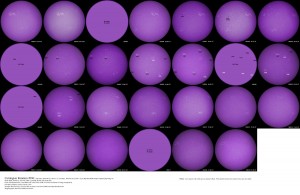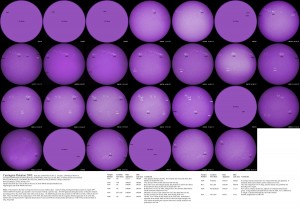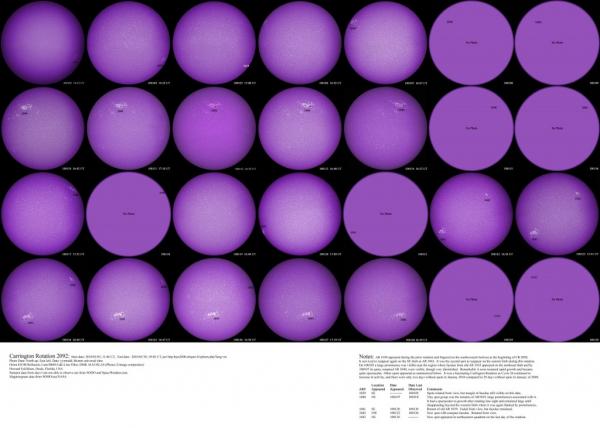May 31, 2010
Sunspot Summary Carrington Rotation 2096 – Howard Eskildsen
Sunspot Summary Carrington Rotation 2096
Start date: 2010/04/22, 18:15 UT, End date: 2010/05/19, 23:50 UT, per http:bass2000.obspm.fr/ephem.php?lang=en
Notes: The Sun had been without spots for 8 days at the start of this rotation, and except for a pore was blank for its first 5 days.
Over the next 11 days there were 8 small spots and a single blank day. The final 11 days were again without spots, and solar activity
continued at a very low level.
Dates below expressed as yymmdd (Universal Date)
Sunspot Location Date Date
Number First Seen Appeared Last seen Comments
Pore NE Quadrant 100427 100427 Pore in fresh plage. Lasted less than one day.
1063 NE Quadrant 100428 100428 Appeared SE of plage associated with yesterday’s pore and GONG
Reappeared 100503 100505 magnetograms reveal it to be in a magnetic region distinct from yesterday’s pore. Faded from view on 100429, reappeared on 100503 and rotated from view on 100505.
1064 NE Quadrant 100430 100502 Bipolar spot per SpaceWeather.com when it first appeared. I was not able to observe it until the next day and only a single spot remained which faded from view later.
1065 SW Quadrant 100503 100504 I could not see spots on my photos, but NOAA listed it.
1066 Southern 100503 100504 Small, short-lived spot
1067 NE Limb 100501 100506 Rotated into view with at least 2 small spots but not numbered for 2 days. Faded from view by 100507
1068 SE Quadrant 100503 100504 Rotated into view, short lived, faded from view next day
1069 NW Quadrant 100504 100508Small little spot eventually rotated out of view
1070 Northern 100506 100506 I was unable to observe on the only day it was visible.







